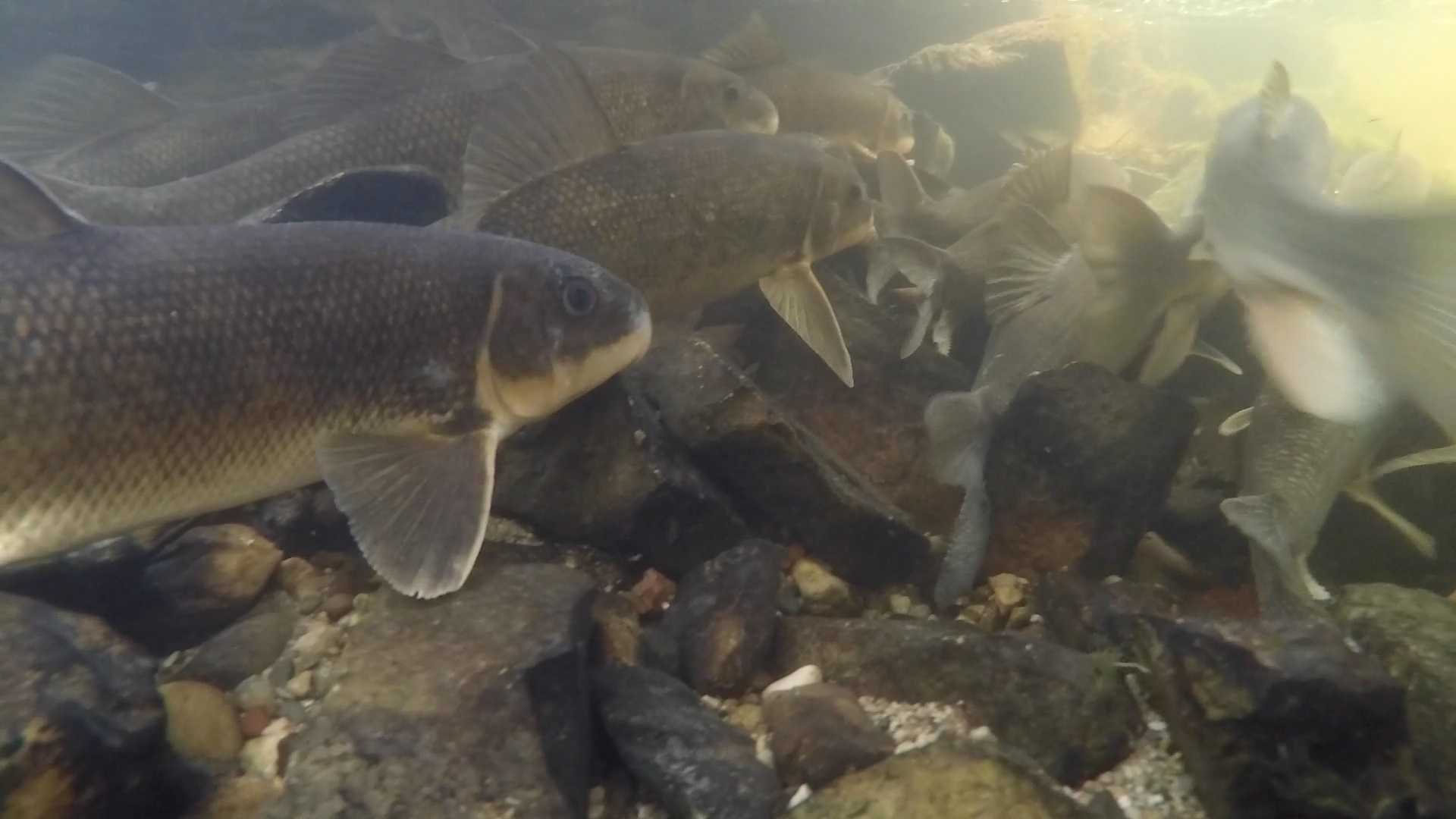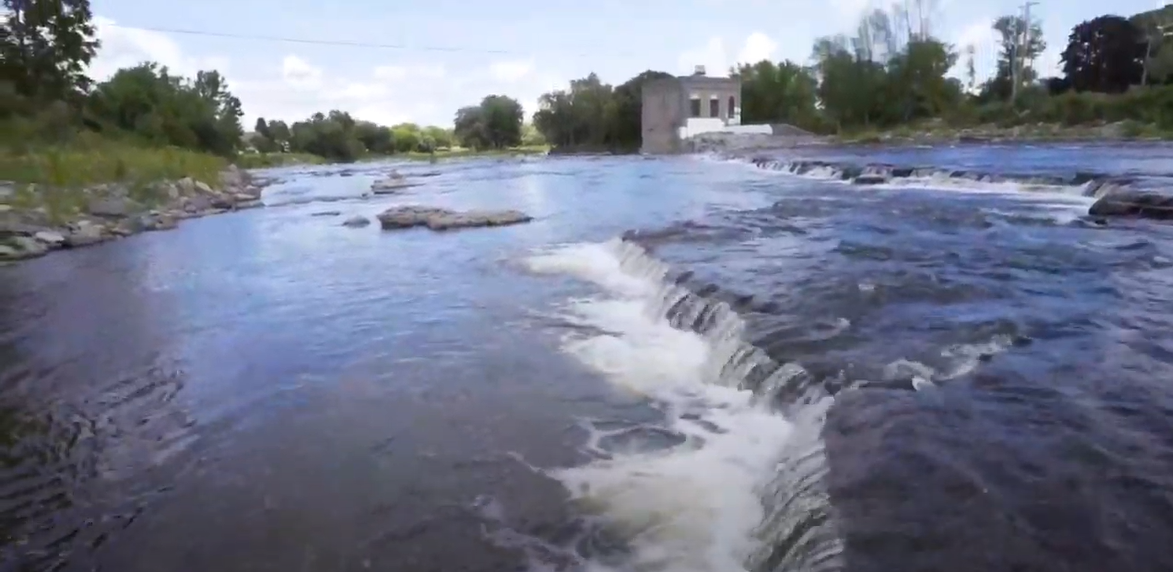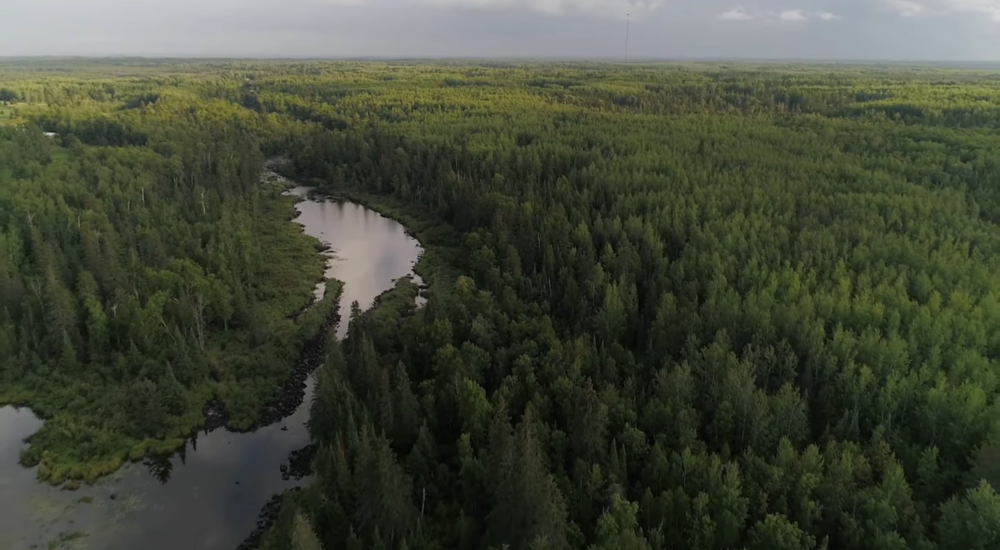
Rivers, streams and lakes are warming, casting a dark shadow on the future of coldwater fish in the Great Lakes region. To save them, state and federal agencies around the Great Lakes are investing millions in these fish.
Currently, the Great Lakes are home to coldwater fish like ciscoes, walleyes, suckers, yellow perch, smallmouth bass, brook trout, brown trout, rainbow trout, chinook salmon and coho salmon.
However, according to the National Park Service, climate research predicts a decline in coldwater fish habitats as the water continues to warm.
Alongside climate change, development can also affect fish habitats, according to Daniel Hayes, a professor at the Michigan State University Department of Fisheries and Wildlife.
“Human alterations to the environment result in the diminishment of the habitat to support species we care about,” Hayes said.
According to Hayes, of these alterations, dams and culverts can impact coldwater fish, especially those living in streams, by limiting their ability to move within a river system or between river systems and the Great Lakes.

Hogansburg Dam (Photo by David Ruck, Great Lakes Outreach Media)
“A lot of times, the larger part of the river will warm up a lot in the summer and the fish will go upstream where it’s cooler, but then drop down into the bigger, deep areas in the winter where they’re more protected from ice and there might be more food there,” Hayes said.
This movement can be essential for coldwater fish like salmon, who move upstream to spawn, as well as those who live in the river year round.
“If the habitat is degraded relative to what the organism needs, then it’s not producing what it has the potential to produce,” Hayes said. “If you take a river in Michigan and warm it up, it’s still a habitat, it’s still a place fish could live, it just may support different fish than it used to or that we want it to.”
Michigan conservation priorities
Through the Michigan Department of Natural Resources’ Fisheries Habitat Grant program, 17 fish habitat conservation projects will receive funding. The funding, which adds up to more than $2.1 million, will be supported by an additional $616,000 in partner contributions.
Using funds from fishing license sales, general state funds and a settlement with Consumers Energy, The Fisheries Habitat Grant program provides annual support to three grant areas: aquatic habitat conservation, dam management, and aquatic habitat and recreation in the Au Sable, Manistee and Muskegon river watersheds.
“When completed, these projects will reconnect fish passage on over 250 miles of streams, including coldwater habitats that provide greater resilience to warming on some of the state’s premier trout and salmon rivers,” Joe Nohner, a resource analyst with the Michigan Department of Natural Resources, said in a June press release.
Coldwater conservation projects include dam removal and repair, reso urce assessment studies and improved access to recreational fishing.
According to Hayes, coldwater fish like salmon, trout and grayling are favored worldwide for fishing and have narrow habitat requirements, making them a priority for conservation efforts.
“There’s kind of the value of a resource and the degree of threat we perceive for those resources leads to management actions,” he said. “When management agencies put money forth to do something, it kind of reflects, intentionally or unintentionally, their priorities and their priorities are driven by what their stakeholders want.”
A 2019 study by the non-profit Michigan United Conservation Clubs found that Michigan ranked first among the Great Lakes states for jobs created from hunting- and fishing-related purchases, generating more than $11.2 billion annually.
Of the 17 funded projects, 11 have been deemed priority habitat conservation projects by the MDNR.
“We’ll also be able to get valuable new information about inland lake aquatic vegetation, mussel populations and northern Michigan trout streams, which means more effective resource management,” Nohner said in the press release.
The grants are made available to local, state, federal and tribal governments, as well as non-profit groups. The program will be requesting more grant proposals in October.

Boardman River (Image from Great Lakes Now Episode 1018)
Programs around the region
In Wisconsin, the DNR provides grants for habitat conservation in Lake Michigan and Lake Superior.
They offer state-funded grants through programs like the Surface Water Grant Program and the Great Lakes Protection Fund, as well as privately funded grants through the Fund for Lake Michigan. This year, these grants funded projects like sturgeon habitat mapping on the Milwaukee River and the removal of abandoned railroad in Nebagamon Creek.
“In the Lake Superior Basin, I would say brook trout has been a focus, in addition to lake sturgeon and lake trout work,” said Cherie Hagen, the WDNR’s Lake Superior basin supervisor.
In Pennsylvania, the Pennsylvania Fish and Boat Commission offers a handful of grant programs geared towards habitat conservation.
Programs include the Erie Access Improvement Grant Program, which focuses on angler access in the Erie watershed, along with other watershed restoration grant programs and the federally funded State Wildlife Grant Program. The York and Lancaster Counties Habitat Improvement Grant Program focuses on sediment reduction in two specific counties.
The Coldwater Heritage Partnership provides funding for conservation in coldwater streams all over Pennsylvania. This year, 12 grants, amounting to $70,000 total, were awarded to conservation organizations through the Coldwater Heritage Partnership’s Coldwater Conservation Grant Program.
In Ohio, the Coastal Management Assistance Grant program provides annual federally funded grant opportunities for research, public access, habitat restoration and other purposes.
Federal money funds much of the fish habitat conservation around the Great Lakes, through The Great Lakes Restoration Initiative and other programs.
In New York, the Great Lakes Restoration Initiative funded 117 projects with a total of $19 million from 2018-2020. They’re currently funding projects in Wisconsin, including habitat restoration in Pickle Pond, fish passage development in Mineral Springs Creek and management of non-native plants in the Sheboygan County Trout Streams.
Catch more news on Great Lakes Now:
Dams Across the Great Lakes: End of the line for aging infrastructure?
Grayling Revival: Researchers hope to reintroduce a once-abundant native fish
The Suckers: Great Lakes’ “best supporting fishes” are important to the food web
Intense storms from climate change harming Michigan streams and rivers
Report: Lake Michigan is ‘running a fever.’ More storms, less fish possible.
API key not valid. Please pass a valid API key.Featured image: Suckers live in all five of the Great Lakes, and they swim upstream to spawn every spring. (Photo courtesy of Shedd Aquarium and Karen Murchie)




